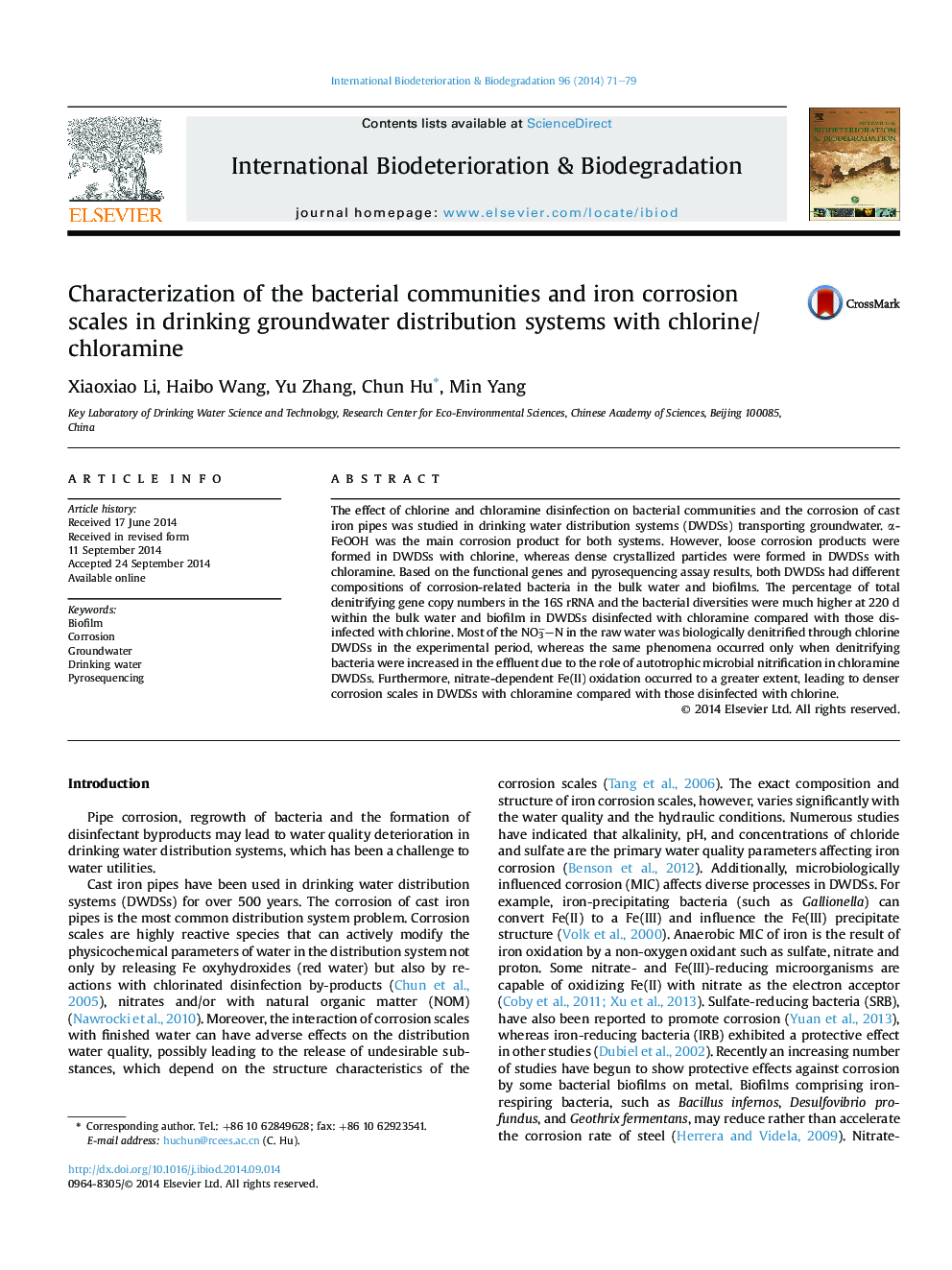| Article ID | Journal | Published Year | Pages | File Type |
|---|---|---|---|---|
| 6289223 | International Biodeterioration & Biodegradation | 2014 | 9 Pages |
Abstract
The effect of chlorine and chloramine disinfection on bacterial communities and the corrosion of cast iron pipes was studied in drinking water distribution systems (DWDSs) transporting groundwater. α-FeOOH was the main corrosion product for both systems. However, loose corrosion products were formed in DWDSs with chlorine, whereas dense crystallized particles were formed in DWDSs with chloramine. Based on the functional genes and pyrosequencing assay results, both DWDSs had different compositions of corrosion-related bacteria in the bulk water and biofilms. The percentage of total denitrifying gene copy numbers in the 16S rRNA and the bacterial diversities were much higher at 220 d within the bulk water and biofilm in DWDSs disinfected with chloramine compared with those disinfected with chlorine. Most of the NO3â-N in the raw water was biologically denitrified through chlorine DWDSs in the experimental period, whereas the same phenomena occurred only when denitrifying bacteria were increased in the effluent due to the role of autotrophic microbial nitrification in chloramine DWDSs. Furthermore, nitrate-dependent Fe(II) oxidation occurred to a greater extent, leading to denser corrosion scales in DWDSs with chloramine compared with those disinfected with chlorine.
Related Topics
Life Sciences
Environmental Science
Environmental Science (General)
Authors
Xiaoxiao Li, Haibo Wang, Yu Zhang, Chun Hu, Min Yang,
